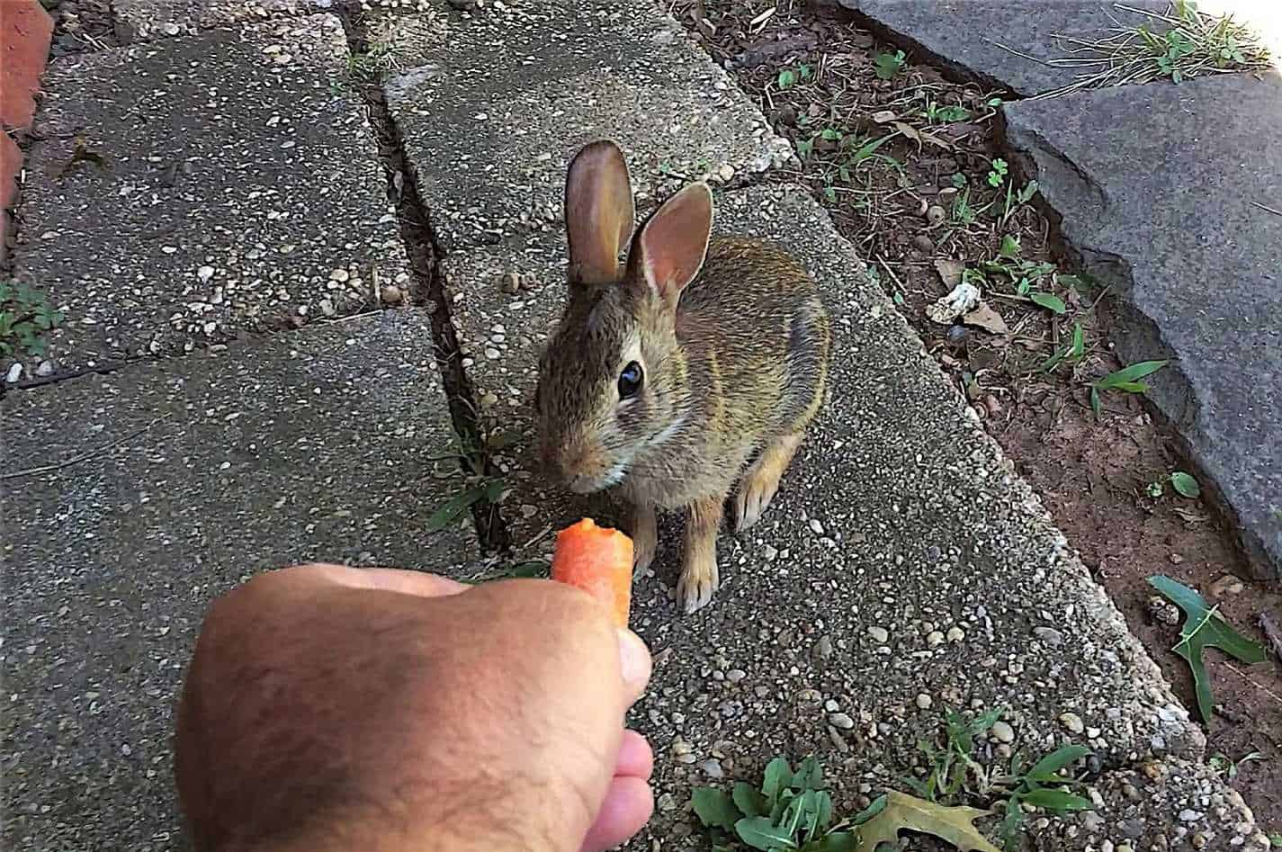What Do Wild Rabbits Eat In Winter?
Winter can be a challenging season for many animals, including wild rabbits. As the temperature drops and food becomes scarce, these furry creatures have to adapt their diets to survive. In this article, we will explore what wild rabbits eat in winter and how they manage to find nourishment during the colder months.

1. Grass and Hay
Grass and hay are staple foods for wild rabbits throughout the year, including winter. These fibrous plants provide crucial nutrients, such as fiber and protein, that rabbits need to stay healthy. While fresh grass might be scarce during the winter months, rabbits can still find dried grass or hay in fields and meadows to sustain themselves. They will nibble on the dry stalks, extracting nutrients and moisture.
2. Bark and Twigs
When food sources are limited, wild rabbits turn to bark and twigs as an alternative source of nutrition. They are especially fond of young tree bark and tender twigs, as they are easier to digest. Rabbits have specialized teeth that continuously grow, allowing them to gnaw on hard materials like bark without damaging their teeth.
3. Buds and Tree Saplings
In winter, when other vegetation is scarce, wild rabbits rely on the buds and saplings of various plants and trees. They have a keen sense of smell and can detect the presence of these nutrient-rich plant parts. Rabbits will nibble on the buds, which are often packed with vitamins and minerals, to supplement their diet.
4. Seeds and Grains
Seeds and grains are another important food source for wild rabbits during winter. They will search for seeds that have fallen to the ground or dig through snow to find buried seed heads. Rabbits are particularly fond of seeds from grasses, weeds, and various wild plants. Grains, such as wheat and oats, also provide essential carbohydrates to help them withstand the cold weather.
5. Agricultural Crops
In some areas, wild rabbits may venture into agricultural fields to find food during winter. They can cause damage to crops like lettuce, carrots, and cabbage, which are all part of their natural diet. Farmers often implement measures to protect their crops from rabbit infestations, as rabbits can quickly deplete a field if left unchecked.
6. Sprouts and Shoots
While fresh green plants may be scarce during winter, some hardy plants manage to sprout and produce shoots even in the colder months. Wild rabbits will actively search for these tender shoots and nibble on them to fulfill their nutritional needs. These sprouts can provide vital vitamins and minerals that help sustain the rabbits until the arrival of spring.
Frequently Asked Questions (FAQs)
1. Can wild rabbits survive only on bark and twigs during winter?
No, wild rabbits cannot survive solely on bark and twigs. Although they can digest these materials and extract some nutrients, a diet consisting solely of bark and twigs would not provide all the necessary nutrients for their survival. They need a varied diet that includes grass, hay, buds, and other plant matter.
2. Do wild rabbits hibernate during winter?
No, wild rabbits do not hibernate. They are active year-round, including during winter months. However, they may reduce their activity levels and spend more time in their burrows to conserve energy and stay warm.
3. Are wild rabbits able to find enough food in winter?
While food sources may be limited, wild rabbits have various strategies to locate enough food during winter. They rely on their natural foraging instincts, feeding on grass, hay, bark, twigs, buds, seeds, and even agricultural crops when available.
4. Can I feed wild rabbits during winter?
Feeding wild rabbits can disrupt their natural diet and feeding patterns. It is generally best to let them find their own food sources. However, if you have a severe winter with prolonged snow cover and limited natural food available, you can leave small amounts of fresh, non-sugary vegetables or hay in a sheltered area for them to nibble on.
In conclusion, wild rabbits have various strategies for finding food during the winter months. While grass may be scarce, they can rely on dried grass and hay, bark and twigs, buds and saplings, seeds and grains, sprouts and shoots, and even agricultural crops in some cases. These resourceful creatures are equipped to survive even in challenging conditions, ensuring their continued existence in the wild.
Related Articles…
Copyright Notice:
All images on this website are obtained from the internet and remain copyrighted to their original owners. If you hold copyright to any image and want it taken down, please reach us.